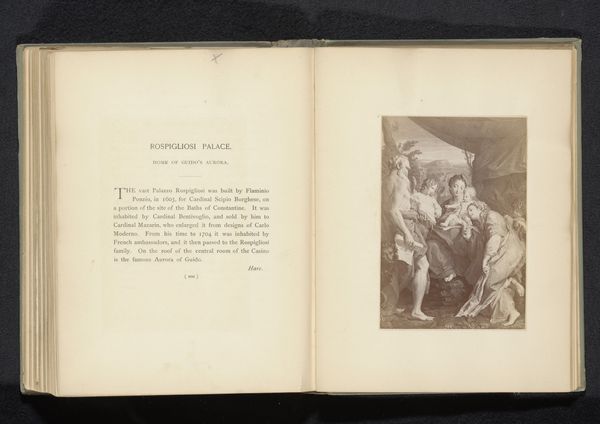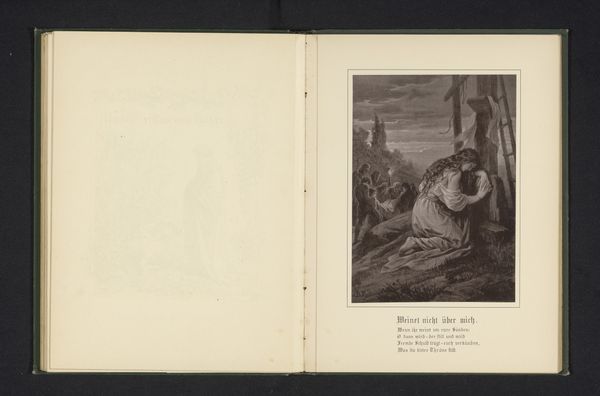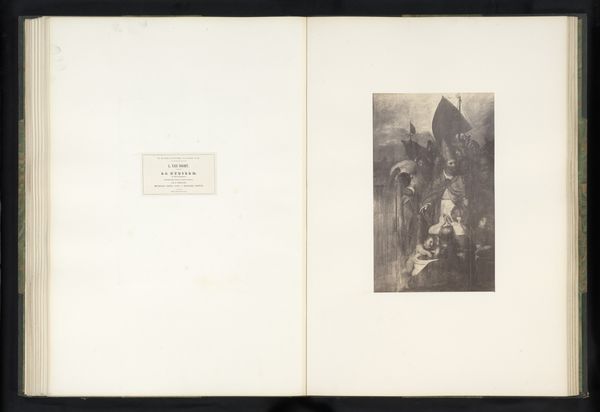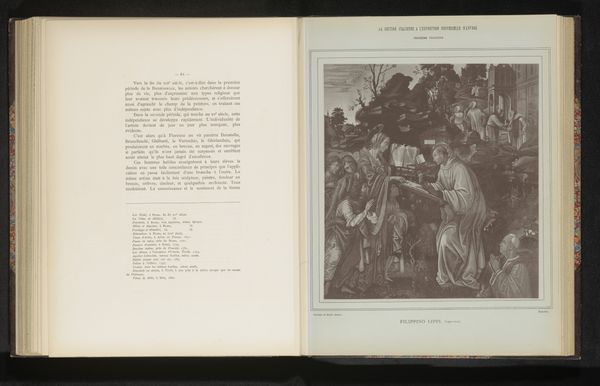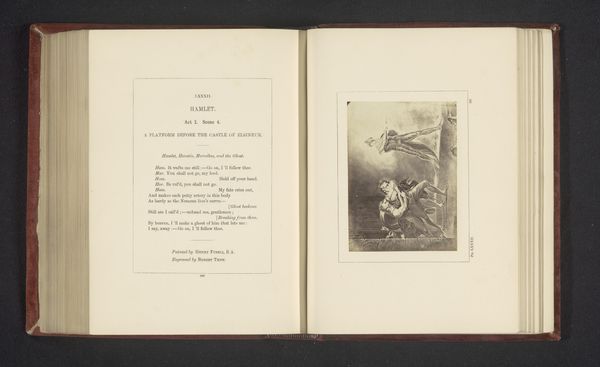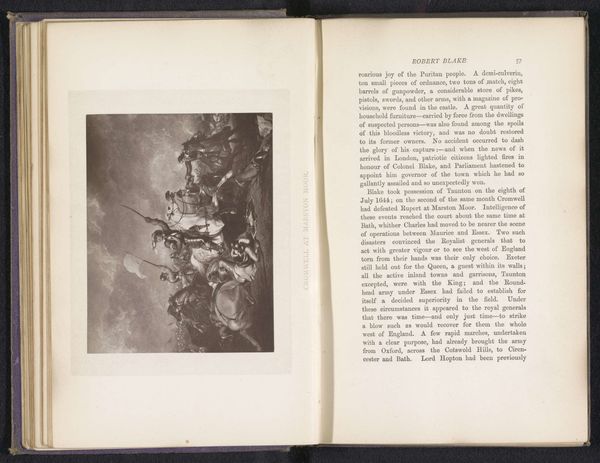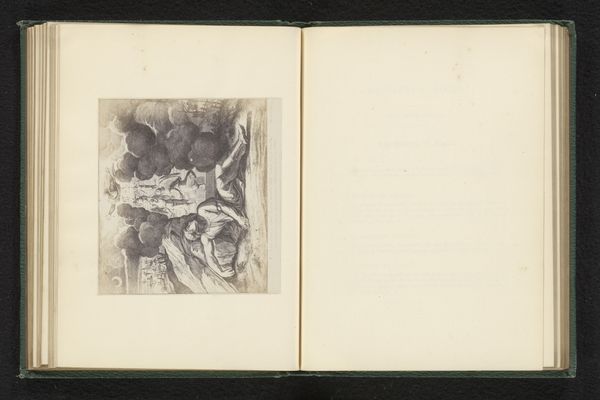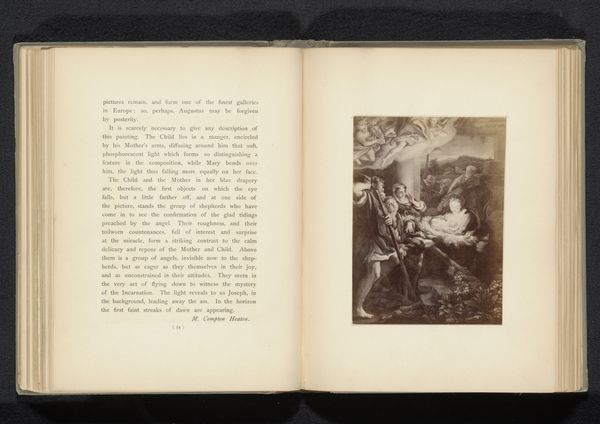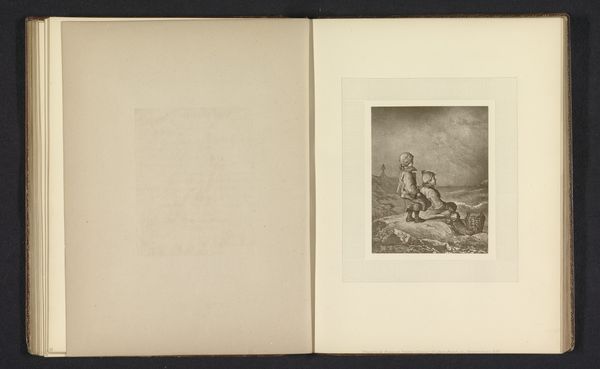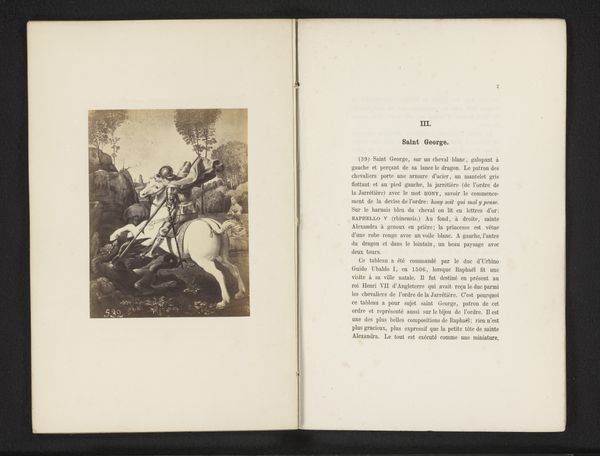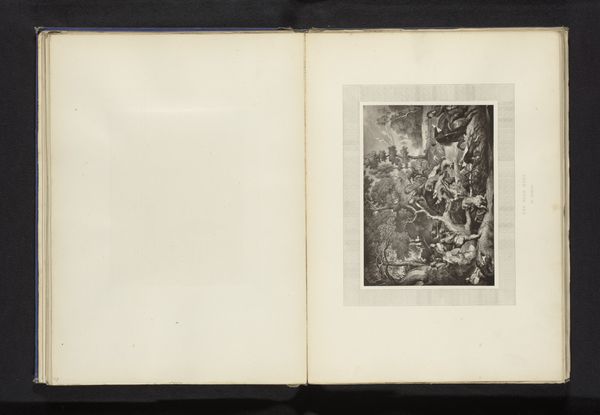
Fotoreproductie van een schilderij van een man met een bos hout op zijn rug met daarachter een engel before 1884
0:00
0:00
Dimensions: height 198 mm, width 143 mm
Copyright: Rijks Museum: Open Domain
This photogravure captures an anonymous painting of a man carrying wood, accompanied by an angel. The image evokes the moralizing spirit of late 19th century Germany, a period marked by rapid industrialization and social change. The woodcutter represents the working classes, burdened by labor. The angel suggests divine blessing upon the man's toil, reinforcing values of hard work and patience – virtues the burgeoning industrial economy demanded. However, it could also be interpreted as a commentary on social inequality, showing how religious ideology was co-opted to legitimize the status quo. Was this artwork meant to encourage the acceptance of difficult conditions? Was it a critique of the institutions of the time? To fully understand such images, art historians often turn to sources such as period literature, religious texts, and economic data. These inform our interpretations and highlight how artworks are deeply embedded in their specific socio-political and institutional contexts.
Comments
No comments
Be the first to comment and join the conversation on the ultimate creative platform.



